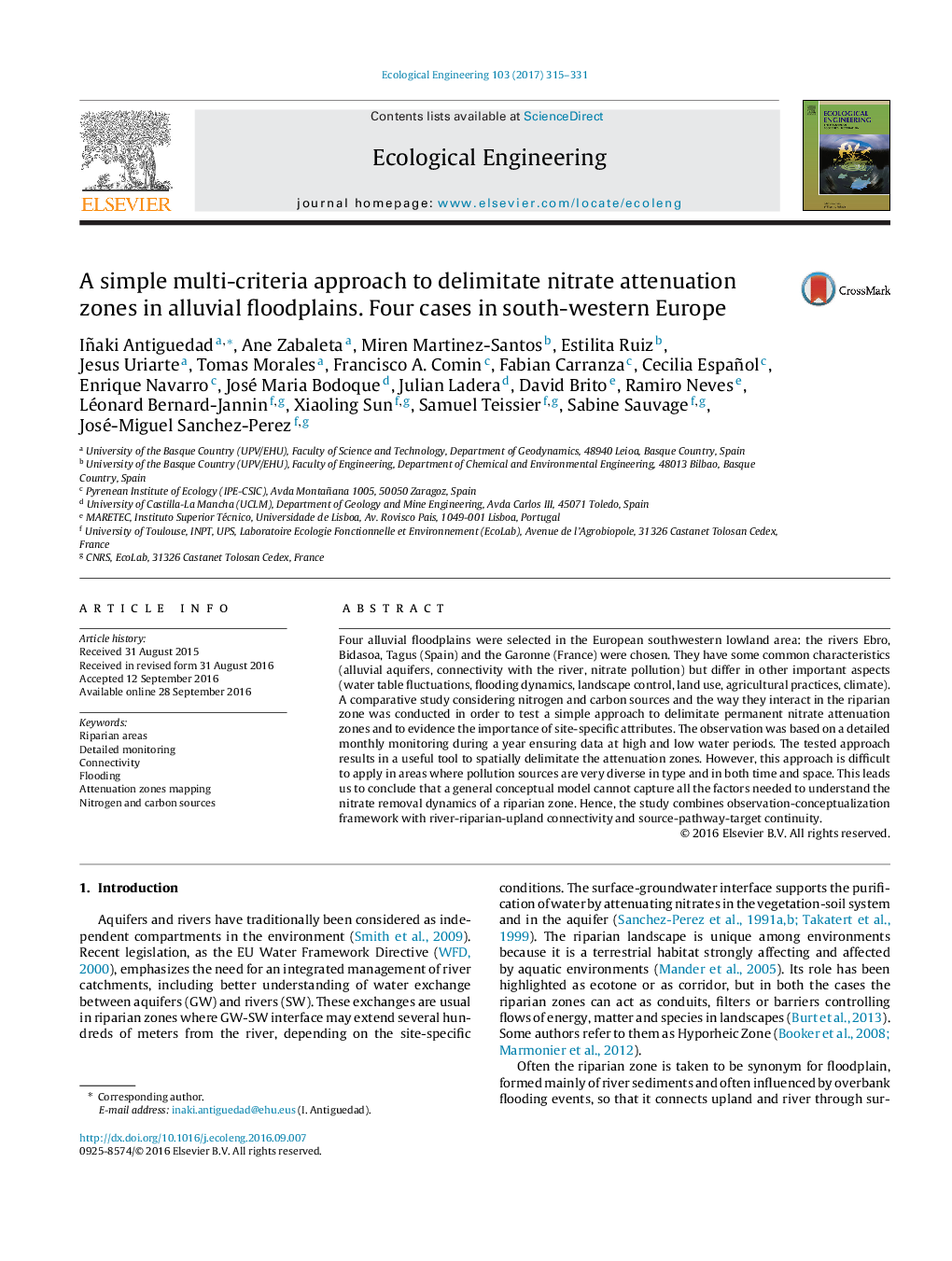| Article ID | Journal | Published Year | Pages | File Type |
|---|---|---|---|---|
| 5743888 | Ecological Engineering | 2017 | 17 Pages |
â¢A comparative study of four riparian zones of Southwest of Europe is conducted.â¢The approach is based on a one year monitoring: hydrochemistry and flow net.â¢River-floodplain-upland connectivity and C and N source-pathways are considered.â¢Indicators to map the attenuation zones are proposed.
Four alluvial floodplains were selected in the European southwestern lowland area: the rivers Ebro, Bidasoa, Tagus (Spain) and the Garonne (France) were chosen. They have some common characteristics (alluvial aquifers, connectivity with the river, nitrate pollution) but differ in other important aspects (water table fluctuations, flooding dynamics, landscape control, land use, agricultural practices, climate). A comparative study considering nitrogen and carbon sources and the way they interact in the riparian zone was conducted in order to test a simple approach to delimitate permanent nitrate attenuation zones and to evidence the importance of site-specific attributes. The observation was based on a detailed monthly monitoring during a year ensuring data at high and low water periods. The tested approach results in a useful tool to spatially delimitate the attenuation zones. However, this approach is difficult to apply in areas where pollution sources are very diverse in type and in both time and space. This leads us to conclude that a general conceptual model cannot capture all the factors needed to understand the nitrate removal dynamics of a riparian zone. Hence, the study combines observation-conceptualization framework with river-riparian-upland connectivity and source-pathway-target continuity.
